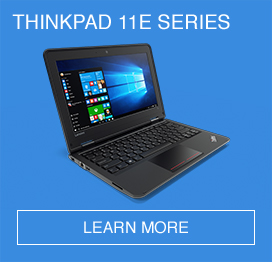How can educational policymakers, administrators and parents make sense of the promise and pitfalls of technology-led innovation?
New digital technologies disrupting whole industries is nothing new. From the all-pervasive ‘world at your fingertips’ smartphones and tablets through to the Internet of Things, workplace automation and outsourcing, technology will continue to reshape the world. There are many points to consider when assessing the impact of new technology on education.
Learning from recent history
There have been a number of recent attempts at technology-led innovation in education. Some have fallen well short of the mark, while others have simply proven to be expensive failures - both in terms of educational outcomes for students as well as education budgets. Examples include:
- The Australian Government’s ‘one laptop per child’ $2.4 billion program, now considered to be a failure. This mirrors experiences elsewhere in the world, but the jury is still out on the optimal approach to utilising in-classroom technology.
- In the 2015 Students, Computers and Learning report, Andreas Schleicher, OECD director for education and skills, concludes that school students who use computers extensively at school do a “lot worse in most learning outcomes, even after accounting for social background and student demographics”.
- The MOOC, or massive online open course, is an extension of the e-learning model – learning via the internet. These models are based on the principle of develop once and accomplish unlimited delivery over the internet. Despite the initial hype, the evidence consistently shows that the course-completion rate is stubbornly low – in the order of 10 per cent, on average. Additionally, recent research[1] has identified that the dual underlying challenges of ensuring the quality of (i) MOOC education materials and (ii) assessment processes remain unresolved. These two factors underpin the entire rationale for MOOCs - the ‘democratisation of education’ for the disadvantaged.
Innovate now, pay later?
The real challenge facing educators lies in determining how best to use innovative, rapidly evolving technologies and related services now to deliver improved educational outcomes in the future. The speed of technological change is such that attempts at optimising technology, innovation and educational pedagogies only exacerbate the challenge. No sooner has the latest technology been implemented that it risks being superseded by the next ‘big thing’. Education is an environment where the impacts – either positive or negative – of any technology-led innovation will not be known with certainty for some time.
One of the demands placed on today’s education system is to prepare students for the new digital world. Today’s students are expected to be not only digitally competent, but have the skills to participate in an employment landscape that is itself undergoing fundamental technology-led change. Students will be competing for jobs in an increasingly globalised marketplace. The influences of outsourcing, offshoring or even open workplaces such as Freelancer, Airtasker or Upwork are subjecting new entrants to the workplace with unprecedented challenges and competition.
However, research suggests that the relatively low digital skill level of many Australian teachers contributes to students’ low digital literacy levels. The case for re-skilling teachers with the necessary ICT competencies is no small task, and is a beyond the scope of this article.
In-classroom technologies: Help or hindrance?
Teachers are there to teach students, not wrangle with poorly set-up or unreliable in-classroom technology. Additionally, school administrators often have to deal with the costs and challenges of configuring, maintaining and operating on-site technologies. The rapid evolution of technology itself potentially solves this problem. When cloud technologies are used, the need for on-site support services largely disappears. The focus then shifts from the technology itself to how the technology supports educational outcomes.
Additionally, the increasing adoption of BYOD further reduces the need for schools to support in-classroom technologies. Parents and students are bearing the cost of providing laptops, tablets and smartphones.
IT innovation in education: Key points to consider
When educational policymakers, institutions and parents alike attempt to strike the right balance of using new and innovative technologies to improve educational outcomes, what key factors should they consider? Here are a few pointers.
1. Don’t put the cart before the horse
Evidence is that adopting a ‘technology-first’ approach to education is unlikely to provide across-the-board benefits in student outcomes. Be willing to invest time and effort to test the benefits of any new innovation in evidence, not opinion. This will mitigate the future risks of failed initiatives.
2. Question the hype
The educational technology industry is big business, and getting bigger. Analysts are projecting global tech spend in education to more than double over the next five years, reaching almost US$94 billion by 2020. Getting a slice of this lucrative market is the main game for the tech vendors. The persistent promotion of the benefits of any new and innovative technologies is fuelled by technology evangelists and tech vendors alike. Recognise that it often takes some time for a new technology to pass the peak of inflated expectations, only after which its real value emerges.
The bottom line is what’s good for the technology vendor may not be good for the student’s educational outcomes.
3. Recognise that it’s complicated
When modern technology meets the human brain, the difference in evolutionary timelines is stark. Digital technologies have been around for less than a generation, while our human brains have taken eons to evolve. While our living, working and learning environments are being dramatically redefined by technology, it is also affecting our brains. This adds a level of complexity to the interplay of technological innovation and education. The bottom line is that there is unlikely to be a silver bullet to resolve the tension between technology-led innovation, disruption and education.
How then, does the ‘innovation’ agenda fit in with the real world of education? Put this another way: will innovation result from modern education outcomes, or will it drive improved educational outcomes?
The time for careful consideration is now.
[Footnote]
[1] Hew, K. and Cheung, W., (2014), Students' and instructors use of massive open online courses (MOOCs): Motivations and challenges., Educational Research Review, 2014, vol:12 pg:45-58
Lenovo® ThinkPad® and ThinkCentre® products, powered by Intel® processors, are optimised for long, worry-free hours of superior productivity which provide a better teaching and learning experience for all. Speak with a Lenovo education specialist today to learn more.

















